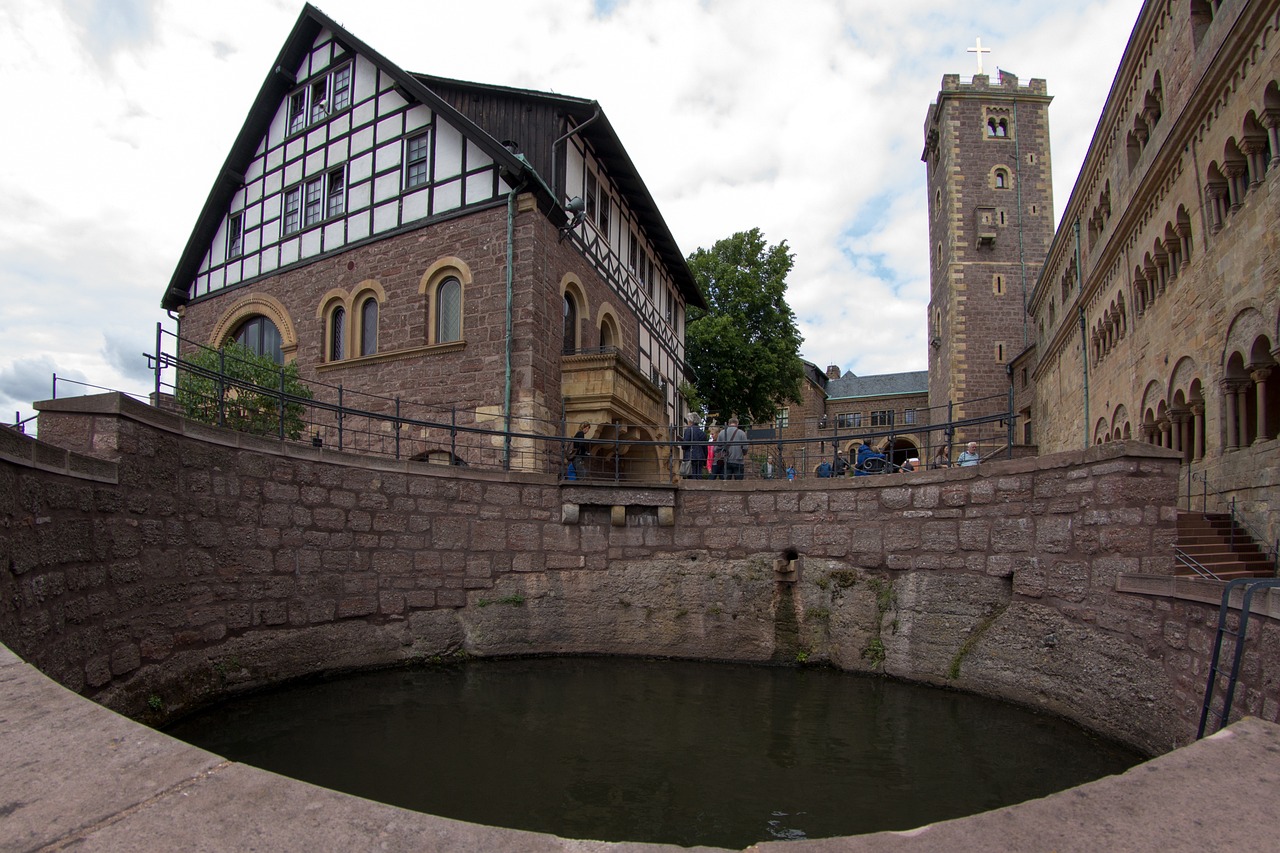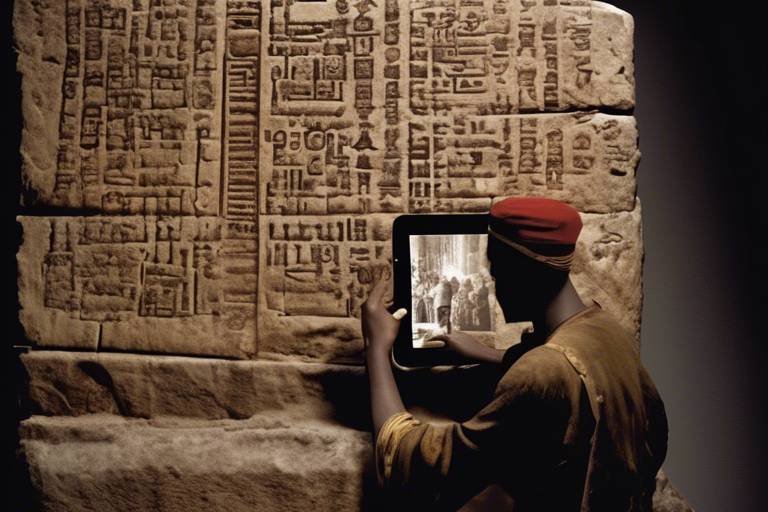How to Create an Inclusive Heritage Preservation Strategy
Heritage preservation is not just about preserving old buildings and artifacts; it is about safeguarding our cultural identity and honoring the historical legacies that shape our communities. By creating an inclusive heritage preservation strategy, we can ensure that diverse voices and perspectives are represented in the preservation efforts, making the process more meaningful and impactful.

Understanding Heritage Preservation
Heritage preservation is not just about protecting old buildings or artifacts; it's about safeguarding our cultural identity and preserving the stories of our past for future generations to cherish. By understanding the importance of heritage preservation, we can ensure that our history remains alive and relevant in today's world.
Heritage preservation is a vital aspect of maintaining our cultural identity and historical legacies. It involves the protection and conservation of significant sites, traditions, and artifacts that hold value in shaping our collective heritage. Imagine a time capsule that allows us to connect with our ancestors and understand the roots of our society. That's the essence of heritage preservation - a bridge between the past, present, and future.

Importance of Inclusivity
Creating an effective heritage preservation strategy involves a multifaceted approach that considers the diverse cultural and historical aspects of a community. In this article, we will delve into various key aspects of inclusive heritage preservation, exploring the significance of inclusivity, community engagement strategies, preservation funding, technology and innovation, policy development, educational initiatives, measuring success, and future trends and challenges.
Heritage preservation plays a crucial role in safeguarding the cultural identity and historical legacies of communities. By protecting and promoting heritage sites, traditions, and artifacts, we ensure that future generations can connect with their roots and understand the rich tapestry of human history.
Inclusivity is a cornerstone of effective heritage preservation. Embracing diverse perspectives and engaging with different communities not only enriches the preservation efforts but also ensures that heritage is accessible and relevant to all. Inclusive practices promote equity, respect, and understanding among various stakeholders, fostering a sense of belonging and shared ownership of cultural heritage.
Engaging with local communities is essential for successful heritage preservation. By involving community members in decision-making processes, organizing cultural events, and providing educational programs, preservation efforts can be tailored to meet the needs and aspirations of the people who cherish their heritage.
Securing adequate funding and resources is vital for sustaining heritage preservation projects. By exploring diverse funding sources, applying for grants, and building partnerships with businesses and organizations, heritage preservation initiatives can thrive and continue to make a positive impact on communities.
Technology and innovative approaches offer new possibilities for enhancing heritage preservation strategies. From digital archives and virtual reality experiences to conservation techniques and interactive exhibits, leveraging technology can make heritage more engaging, accessible, and interactive for a wider audience.
Effective policy development and advocacy are essential for creating a supportive environment for inclusive heritage preservation practices. By advocating for heritage-friendly policies, engaging with policymakers, and raising awareness about the importance of heritage conservation, communities can ensure that heritage preservation remains a priority on local and national agendas.
Educational initiatives play a key role in fostering a deeper appreciation for heritage preservation. By offering educational programs, workshops, and guided tours, communities can educate the public about the value of heritage, promote sustainable practices, and inspire future generations to become stewards of their cultural legacy.
Evaluating the success and impact of inclusive heritage preservation strategies is crucial for assessing their effectiveness and making informed decisions for the future. By measuring community engagement, visitor numbers, educational outreach, and stakeholder feedback, organizations can track progress, identify areas for improvement, and celebrate achievements.
Exploring emerging trends and potential challenges in heritage preservation is essential for staying ahead of the curve. From adapting to technological advancements and changing demographics to addressing environmental threats and funding constraints, heritage preservation strategies must evolve to meet the needs of future generations and safeguard cultural heritage for years to come.

Community Engagement Strategies
Community engagement is a vital component of any successful heritage preservation strategy. By involving local communities in the decision-making process, heritage initiatives can become more meaningful and impactful. One effective way to engage communities is through participatory workshops and events that allow residents to share their knowledge, stories, and perspectives on local heritage. These interactions not only foster a sense of ownership but also build strong relationships between preservationists and the community.
Additionally, creating partnerships with local organizations, schools, and businesses can further enhance community engagement. Collaborating with these stakeholders can bring diverse expertise, resources, and support to heritage preservation projects. By working together, communities can develop a shared vision for preserving their heritage and ensure that the process is inclusive and representative of all voices.
Furthermore, utilizing digital platforms and social media can help reach a wider audience and engage individuals who may not be able to participate in traditional community events. Virtual tours, online exhibitions, and interactive storytelling can provide accessible ways for people to connect with their heritage and contribute to preservation efforts.
When engaging with communities, it is essential to listen actively, respect diverse perspectives, and address concerns transparently. By building trust and fostering collaboration, heritage preservation initiatives can create a sense of unity and pride within the community, leading to long-term sustainability and appreciation for cultural heritage.

Preservation Funding and Resources
When it comes to preserving our heritage, funding and resources play a crucial role in ensuring that our cultural treasures are protected for future generations. Securing financial support for heritage preservation projects can be a challenging task, but it is essential for the success and sustainability of such initiatives.
One of the key aspects of preservation funding is identifying sources of financial support. This can include government grants, private donations, corporate sponsorships, and crowdfunding campaigns. Diversifying funding sources can help reduce reliance on a single channel and ensure the long-term viability of heritage preservation efforts.
Moreover, effective budget planning is essential to ensure that resources are allocated efficiently and transparently. Creating a detailed budget that outlines the costs involved in preservation projects can help in tracking expenses and making informed decisions about resource allocation.
In addition to financial resources, access to technical expertise and specialized knowledge is also crucial for successful heritage preservation. Collaborating with experts in conservation, architecture, archaeology, and other relevant fields can enhance the quality of preservation projects and ensure that best practices are followed.
Furthermore, partnerships with cultural institutions, academic organizations, and community groups can provide additional resources and support for heritage preservation initiatives. By fostering collaborations and sharing resources, the impact of preservation efforts can be maximized, benefiting both the heritage sites and the communities they serve.
Overall, securing funding and resources for heritage preservation is a multifaceted process that requires strategic planning, collaboration, and creativity. By prioritizing inclusivity and sustainability in funding strategies, we can ensure that our shared heritage is safeguarded and celebrated for generations to come.

Technology and Innovation in Preservation
Technology and innovation have revolutionized the field of heritage preservation, offering new tools and approaches to safeguard cultural treasures for future generations. From advanced imaging techniques to digital mapping technologies, the integration of tech solutions has significantly enhanced the efficiency and accuracy of preservation efforts. For instance, 3D scanning technology allows for the detailed documentation of historical sites and artifacts, creating virtual replicas that can be studied and preserved without risking damage to the originals.
Furthermore, augmented reality (AR) and virtual reality (VR) applications have opened up immersive experiences for visitors, enabling them to explore heritage sites in a dynamic and interactive way. These innovative technologies bridge the gap between the past and the present, offering a deeper understanding of historical contexts and cultural significance. By leveraging digital platforms and interactive displays, heritage preservationists can engage audiences of all ages and backgrounds, fostering a sense of connection and appreciation for heritage.
Moreover, the use of big data analytics and machine learning algorithms has revolutionized the management of heritage sites, allowing for predictive maintenance and risk assessment. By analyzing vast amounts of data, preservationists can anticipate potential threats to cultural assets and implement proactive measures to mitigate risks. This data-driven approach not only enhances the longevity of heritage sites but also facilitates informed decision-making in resource allocation and conservation strategies.
In addition, crowdsourcing platforms and digital archives have democratized the preservation process, inviting the public to contribute their knowledge and resources to heritage projects. Through collaborative efforts and online platforms, communities can actively participate in the documentation and protection of their cultural heritage, fostering a sense of ownership and pride in preserving shared histories.
Overall, the integration of technology and innovation in heritage preservation not only enhances the efficiency and accuracy of conservation efforts but also fosters greater accessibility and engagement with cultural heritage. By embracing these digital tools and approaches, preservationists can ensure the continued protection and appreciation of our collective heritage for generations to come.

Policy Development and Advocacy
Policy development and advocacy play a crucial role in shaping the landscape of heritage preservation practices. Policies serve as the framework within which heritage preservation initiatives operate, setting guidelines and regulations to protect and conserve cultural assets. Advocacy, on the other hand, involves actively promoting the importance of heritage preservation to stakeholders, policymakers, and the general public.
Effective policy development requires a deep understanding of the cultural significance of heritage sites and the needs of the communities they represent. By engaging with experts, local communities, and heritage professionals, policymakers can create inclusive policies that consider diverse perspectives and ensure the sustainable preservation of cultural heritage.
Advocacy efforts are essential in garnering support for heritage preservation projects and influencing decision-makers to prioritize conservation efforts. Advocates work to raise awareness about the value of cultural heritage, mobilize resources, and rally public support for policies that promote inclusivity and accessibility in heritage preservation.
Collaboration between policymakers, advocacy groups, and heritage organizations is key to driving meaningful change in heritage preservation practices. By working together, these stakeholders can develop comprehensive policies that address the needs of diverse communities, advocate for sustainable funding sources, and implement initiatives that foster a sense of ownership and pride in cultural heritage.
Furthermore, advocacy plays a vital role in ensuring that heritage preservation remains a priority on local, national, and international agendas. By advocating for the integration of heritage preservation into urban planning, sustainable development goals, and educational curricula, advocates can help secure the long-term protection and promotion of cultural heritage for future generations.

Educational Initiatives
Educational initiatives play a crucial role in heritage preservation by raising awareness, fostering appreciation, and instilling a sense of responsibility towards cultural heritage. Through educational programs and activities, individuals are not only informed about the significance of preserving heritage but are also actively engaged in the process. These initiatives aim to bridge the gap between past traditions and present generations, ensuring that heritage is not only protected but also passed down to future ones.
One effective educational strategy is the integration of heritage preservation topics into school curriculums. By incorporating heritage education at an early age, students develop a deeper connection to their cultural roots and understand the importance of safeguarding heritage sites and artifacts. Additionally, interactive workshops, guided tours, and hands-on experiences can offer a more immersive learning environment, making heritage preservation more accessible and engaging to a wider audience.
Collaboration with museums, historical societies, and local experts can also enhance educational initiatives in heritage preservation. By tapping into the knowledge and resources of these institutions, educational programs can provide valuable insights, historical context, and authentic experiences that enrich the learning process. Furthermore, partnerships with academic institutions and research centers can facilitate in-depth studies and innovative approaches to heritage conservation.
Utilizing digital platforms and online resources is another avenue to promote educational initiatives in heritage preservation. Virtual tours, interactive websites, and multimedia presentations can reach a global audience and cater to diverse learning preferences. By leveraging technology, educational programs can adapt to changing trends and engage with audiences beyond physical boundaries, making heritage preservation more inclusive and accessible.
Moreover, promoting community involvement and volunteer opportunities in educational initiatives can empower individuals to actively participate in heritage preservation efforts. By encouraging hands-on participation, workshops, and collaborative projects, communities become stakeholders in the preservation process, fostering a sense of ownership and pride in their cultural heritage. Through education and engagement, individuals can become advocates for heritage preservation, ensuring its continuity and relevance in society.

Measuring Success and Impact
Heritage preservation is a vital aspect of maintaining cultural identity and preserving historical legacies for future generations. It involves safeguarding and promoting the unique heritage of a community, ensuring that it remains accessible and relevant in a rapidly changing world.
Heritage preservation goes beyond simply conserving physical structures or artifacts; it is about honoring the stories, traditions, and values that define a community's identity. By safeguarding heritage sites and practices, we can connect with our past and pass on our legacy to future generations.
Inclusivity plays a crucial role in heritage preservation by ensuring that diverse communities and perspectives are represented and valued. By embracing inclusivity, we can create a more comprehensive and authentic narrative of our shared heritage, fostering unity and understanding among different groups.
Effective community engagement is essential in heritage preservation efforts to ensure that local voices are heard and respected. By involving community members in decision-making processes and project implementation, we can build trust, foster collaboration, and create a sense of ownership over shared heritage.
Securing funding for heritage preservation projects is often a significant challenge. By exploring diverse funding sources, such as government grants, private donations, and corporate sponsorships, we can ensure the financial sustainability of inclusive preservation initiatives.
Technology and innovative approaches offer new opportunities to enhance heritage preservation strategies. From digital archiving and virtual tours to augmented reality experiences, leveraging technology can make heritage more accessible and engaging for a wider audience.
Policy development and advocacy are essential in promoting inclusive heritage preservation practices at local, national, and international levels. By advocating for supportive policies and regulations, we can ensure the protection and promotion of our shared heritage for future generations.
Educating the public about the importance of heritage preservation is key to fostering a culture of appreciation and stewardship. Through educational initiatives such as workshops, guided tours, and school programs, we can raise awareness and instill a sense of responsibility towards preserving our heritage.
Measuring the success and impact of inclusive heritage preservation strategies is crucial for evaluating their effectiveness and identifying areas for improvement. By tracking key performance indicators, collecting feedback from stakeholders, and conducting impact assessments, we can ensure that our efforts are making a meaningful difference in communities.
As we look towards the future, emerging trends such as digital preservation, sustainable practices, and community-driven initiatives are shaping the landscape of heritage preservation. However, challenges such as climate change, urban development, and funding constraints pose significant obstacles that require innovative solutions and collaborative efforts.

Future Trends and Challenges
Heritage preservation is a vital aspect of maintaining our cultural identity and preserving historical legacies for future generations. It allows us to connect with our past, understand our roots, and appreciate the rich tapestry of traditions that have shaped our society.
Heritage preservation encompasses the efforts to safeguard and promote cultural heritage sites, artifacts, and traditions. By preserving these elements, we ensure that our history is not lost and that future generations can learn from and appreciate the achievements of the past.
Inclusivity plays a crucial role in heritage preservation by ensuring that diverse communities and perspectives are represented and respected. When heritage preservation efforts are inclusive, they become more meaningful and relevant to a wider range of people, fostering a sense of unity and belonging.
Engaging with local communities is essential for successful heritage preservation. By involving community members in decision-making processes, sharing knowledge, and listening to their perspectives, we can create a sense of ownership and pride in preserving our shared heritage.
Securing funding for heritage preservation projects is often a challenge, but it is crucial for their success. By exploring various funding sources, applying for grants, and leveraging partnerships with organizations and sponsors, we can ensure that inclusive preservation projects have the resources they need to thrive.
Technology and innovative approaches can revolutionize heritage preservation efforts. From digital archiving and virtual tours to 3D scanning and augmented reality experiences, these tools can make heritage more accessible and engaging for a wider audience, enhancing the inclusivity of preservation strategies.
Policy development and advocacy play a significant role in promoting inclusive heritage preservation practices. By advocating for supportive policies, engaging with policymakers, and raising awareness about the importance of heritage preservation, we can create a conducive environment for inclusive initiatives to flourish.
Educating the public about the value of heritage preservation is essential for fostering a culture of appreciation and stewardship. By developing educational programs, workshops, and outreach activities, we can empower individuals to become active participants in preserving our shared heritage.
Evaluating the success and impact of inclusive heritage preservation strategies is crucial for ensuring their effectiveness. By collecting data, soliciting feedback from stakeholders, and monitoring key performance indicators, we can assess the outcomes of our efforts and make informed decisions for the future.
As we look ahead, several trends and challenges are shaping the landscape of heritage preservation. The increasing use of digital technologies, such as virtual reality and artificial intelligence, presents exciting opportunities to enhance the accessibility and interactivity of heritage sites. However, challenges such as climate change, urban development pressures, and funding constraints pose significant threats to the preservation of our cultural heritage. Navigating these trends and challenges will require innovative solutions, strong partnerships, and a steadfast commitment to inclusivity and sustainability.
Frequently Asked Questions
- What is heritage preservation?
Heritage preservation refers to the efforts and activities aimed at safeguarding and conserving cultural, historical, and natural heritage for present and future generations. It involves protecting significant sites, artifacts, traditions, and practices that hold historical, cultural, or social value.
- Why is inclusivity important in heritage preservation?
Inclusivity in heritage preservation ensures that diverse voices, perspectives, and communities are represented and involved in the decision-making processes related to preserving heritage. It helps in fostering a sense of belonging, promoting cultural diversity, and creating a more comprehensive and accurate narrative of history.
- How can communities be engaged in heritage preservation?
Engaging communities in heritage preservation can be done through various means such as organizing community events, workshops, and consultations, creating educational programs, involving local stakeholders in decision-making, and promoting awareness and participation in heritage conservation efforts.
- What role does technology play in inclusive heritage preservation?
Technology can play a significant role in inclusive heritage preservation by facilitating digital documentation, virtual tours, interactive exhibits, and online platforms for community engagement. It can also aid in conservation efforts, data management, and outreach activities to a wider audience.
- How can the success of inclusive heritage preservation strategies be measured?
The success of inclusive heritage preservation strategies can be measured through indicators such as community participation levels, impact on diverse groups, preservation of heritage sites, educational outcomes, public awareness, and the overall sustainability of the initiatives over time.



















